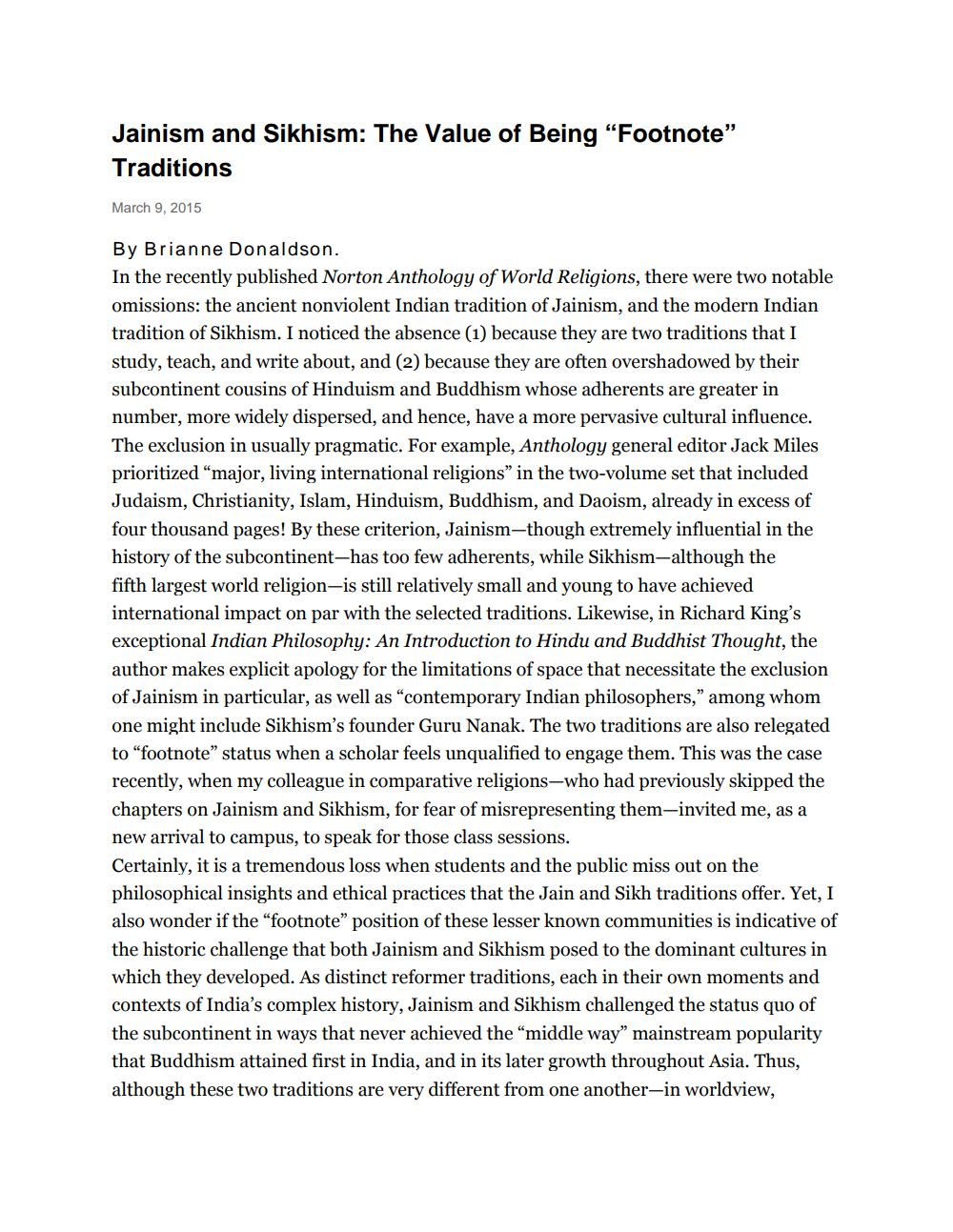Book Title: Jainism and Sikhism Value of Being Footnote Traditions Author(s): Brianne Donaldson Publisher: Brianne Donaldson View full book textPage 1
________________ Jainism and Sikhism: The Value of Being “Footnote" Traditions March 9, 2015 By Brianne Donaldson. In the recently published Norton Anthology of World Religions, there were two notable omissions: the ancient nonviolent Indian tradition of Jainism, and the modern Indian tradition of Sikhism. I noticed the absence (1) because they are two traditions that I study, teach, and write about, and (2) because they are often overshadowed by their subcontinent cousins of Hinduism and Buddhism whose adherents are greater in number, more widely dispersed, and hence, have a more pervasive cultural influence. The exclusion in usually pragmatic. For example, Anthology general editor Jack Miles prioritized "major, living international religions” in the two-volume set that included Judaism, Christianity, Islam, Hinduism, Buddhism, and Daoism, already in excess of four thousand pages! By these criterion, Jainism-though extremely influential in the history of the subcontinent-has too few adherents, while Sikhism-although the fifth largest world religion-is still relatively small and young to have achieved international impact on par with the selected traditions. Likewise, in Richard King's exceptional Indian Philosophy: An Introduction to Hindu and Buddhist Thought, the author makes explicit apology for the limitations of space that necessitate the exclusion of Jainism in particular, as well as "contemporary Indian philosophers," among whom one might include Sikhism's founder Guru Nanak. The two traditions are also relegated to "footnote" status when a scholar feels unqualified to engage them. This was the case recently, when my colleague in comparative religions-who had previously skipped the chapters on Jainism and Sikhism, for fear of misrepresenting them-invited me, as a new arrival to campus, to speak for those class sessions. Certainly, it is a tremendous loss when students and the public miss out on the philosophical insights and ethical practices that the Jain and Sikh traditions offer. Yet, I also wonder if the "footnote" position of these lesser known communities is indicative of the historic challenge that both Jainism and Sikhism posed to the dominant cultures in which they developed. As distinct reformer traditions, each in their own moments and contexts of India's complex history, Jainism and Sikhism challenged the status quo of the subcontinent in ways that never achieved the “middle way" mainstream popularity that Buddhism attained first in India, and in its later growth throughout Asia. Thus, although these two traditions are very different from one another-in worldview,Page Navigation
1 2 3
